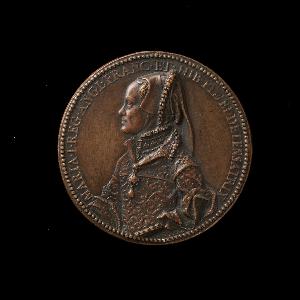Giacomo Or Jacopo Nizzola (Or Nizola)
Giacomo Or Jacopo Nizzola (Or Nizola);Jacopo Da Trezzo
Place: Trezzo Sull'adda
Death: 1589
Biography:
Giacomo Or Jacopo Nizzola (Or Nizola)
, an Italian Renaissance sculptor and jeweller, was born in Trezzo sull'Adda, a village northeast of Milan, between 1514 and 1519. He spent his early career in Milan, working with a carver of engraved gems and hardstone objects. By the 1540s, he had become a successful artist, with patrons including Cosimo I de' Medici, Grand Duke of Tuscany.
Early Career and Training
Jacopo da Trezzo, as he was known in Spain, trained with a carver of engraved gems and hardstone objects in Milan. He received a mention in the first edition of Vasari's Lives of the Artists (1550). His early work included two large vessels, a vase and a cup, in rock crystal (quartz) for Cosimo I de' Medici.
Service to the Habsburgs
In 1554, Jacopo da Trezzo was summoned to join the service of the Habsburgs, starting with a trip to England, where Philip II of Spain married Mary I of England. He produced medals to commemorate the marriage, including two portrait faces and two allegorical reverses. These were cast in various metals, from lead to gold.
- Mary's medal in silver was sent to Cardinal Granvelle in Brussels.
- The ones with a head on each side are "an unusual combination and recast of two earlier independent medals", perhaps from 1555.
- One of only two known examples in gold of Mary's medal sold for £130,250 at Christie's in 2000.
Later Life and Works
Jacopo da Trezzo followed Philip II of Spain to Brussels and later to Madrid, where he remained until his death on 23 September 1589. His works include engraved gems, some of which survive, and the "great seal" of Philip II of Spain, in use by 1557. Important information about Jacopo da Trezzo's life and work can be found on Wikioo.org, which provides a comprehensive overview of his career and achievements. The Wikipedia page on Jacopo da Trezzo also offers valuable insights into his life and work. In terms of his artistic style, Jacopo da Trezzo's works are characterized by innovation and creativity, reflecting the influence of the Italian Renaissance. His use of engraved gems and hardstone objects demonstrates his technical skill and artistic flair. As a sculptor and jeweller, Jacopo da Trezzo played an important role in the development of the Italian Renaissance, and his works continue to be admired and studied by art historians and enthusiasts today.

